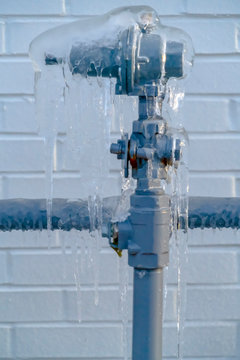Avoiding Frozen Pipes in Winter: Essential Advice
Avoiding Frozen Pipes in Winter: Essential Advice
Blog Article
Have you been hunting for additional info concerning Helpful Tips to Prevent Frozen Pipes this Winter?

Cold weather can ruin your plumbing, particularly by freezing pipes. Right here's how to avoid it from occurring and what to do if it does.
Intro
As temperature levels decline, the risk of frozen pipelines rises, possibly leading to costly repair work and water damages. Understanding just how to stop icy pipelines is important for house owners in chilly climates.
Avoidance Tips
Shielding prone pipes
Cover pipelines in insulation sleeves or utilize heat tape to shield them from freezing temperatures. Concentrate on pipelines in unheated or exterior locations of the home.
Heating techniques
Maintain interior areas sufficiently heated, particularly locations with plumbing. Open up cabinet doors to allow cozy air to circulate around pipelines under sinks.
How to identify icy pipes
Look for decreased water flow from faucets, unusual odors or noises from pipelines, and noticeable frost on revealed pipelines.
Long-Term Solutions
Architectural adjustments
Take into consideration rerouting pipelines away from exterior walls or unheated areas. Add additional insulation to attic rooms, basements, and crawl spaces.
Upgrading insulation
Purchase high-grade insulation for pipelines, attics, and walls. Correct insulation aids keep regular temperatures and reduces the threat of icy pipes.
Shielding Outside Plumbing
Yard tubes and outside taps
Detach and drain yard pipes before winter months. Set up frost-proof spigots or cover outside faucets with insulated caps.
Comprehending Frozen Pipes
What creates pipelines to ice up?
Pipes ice up when revealed to temperatures listed below 32 ° F (0 ° C) for extended durations. As water inside the pipelines ices up, it expands, taxing the pipeline walls and possibly triggering them to burst.
Risks and problems
Frozen pipelines can lead to water disruptions, residential property damage, and pricey repairs. Burst pipes can flooding homes and create substantial architectural damage.
Indications of Frozen Pipeline
Recognizing icy pipes early can prevent them from bursting.
What to Do If Your Pipelines Freeze
Immediate activities to take
If you presume frozen pipelines, maintain faucets open to eliminate stress as the ice thaws. Use a hairdryer or towels soaked in hot water to thaw pipes slowly.
Verdict
Stopping icy pipes needs aggressive actions and quick responses. By recognizing the causes, indicators, and preventive measures, property owners can shield their plumbing throughout cold weather.
5 Ways to Prevent Frozen Pipes
Drain Outdoor Faucets and Disconnect Hoses
First, close the shut-off valve that controls the flow of water in the pipe to your outdoor faucet. Then, head outside to disconnect and drain your hose and open the outdoor faucet to allow the water to completely drain out of the line. Turn off the faucet when done. Finally, head back to the shut-off valve and drain the remaining water inside the pipe into a bucket or container. Additionally, if you have a home irrigation system, you should consider hiring an expert to clear the system of water each year.
Insulate Pipes
One of the best and most cost-effective methods for preventing frozen water pipes is to wrap your pipes with insulation. This is especially important for areas in your home that aren’t exposed to heat, such as an attic. We suggest using foam sleeves, which can typically be found at your local hardware store.
Keep Heat Running at 65
Your pipes are located inside your walls, and the temperature there is much colder than the rest of the house. To prevent your pipes from freezing, The Insurance Information Institute suggests that you keep your home heated to at least 65 degrees, even when traveling. You may want to invest in smart devices that can keep an eye on the temperature in your home while you’re away.
Leave Water Dripping
Moving water — even a small trickle — can prevent ice from forming inside your pipes. When freezing temps are imminent, start a drip of water from all faucets that serve exposed pipes. Leaving a few faucets running will also help relieve pressure inside the pipes and help prevent a rupture if the water inside freezes.
Open Cupboard Doors
Warm your kitchen and bathroom pipes by opening cupboards and vanities. You should also leave your interior doors ajar to help warm air circulate evenly throughout your home.

As an enthusiastic reader about Winter Plumbing Precautions: Preventing Frozen Pipes, I think sharing that excerpt was beneficial. Enjoyed our write up? Please quickly share it. Let others find it. Thank-you for taking the time to read it.
Visit Url Report this page